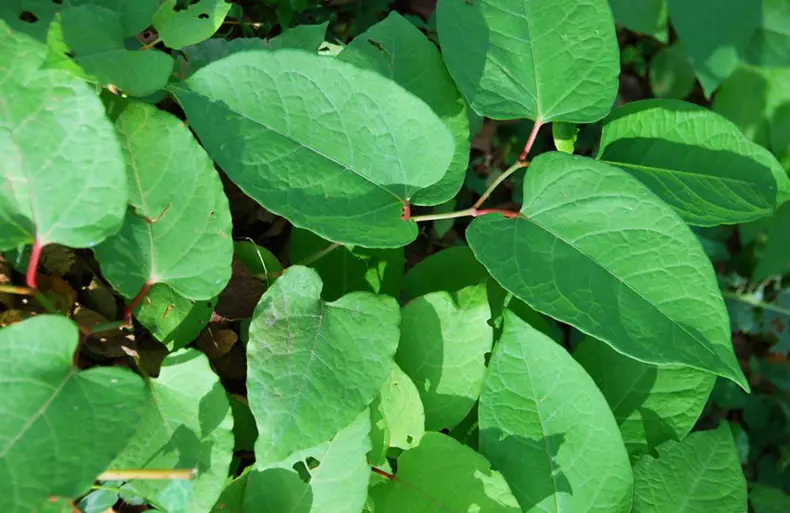Blog | Valuation | Loan Security
Japanese Knotweed: what’s all the fuss, it’s only a plant?

We are indebted to the Victorians for their creation of the railway network, ingenious infrastructure and refinement of politics, but Japanese Knotweed (Fallopia japonica) is an unwanted gift from our ancestors. Introduced from Japan in 1825 as an ornamental plant, the problematic perennial is no longer considered a thing of beauty.
The Royal Horticultural Society describes this fast-growing plant as a ‘real thug’ and the Wildlife and Countryside Act 1981 governs that it is an offence to ‘plant or otherwise cause Japanese Knotweed to grow in the wild’. More recently, the Anti-social Behaviour, Crime and Policing Act 2014 (also known as an ‘ASBO’) can be implemented to control or prevent the growth of this invasive species and the offender could be fined up to £5,000 or face up to two years behind bars.
What is it and how can it be identified?
Japanese Knotweed is a perennial plant with bamboo-like stems and heart or spade shaped leaves. During the early stages of growth, it displays red tinged shoots and, during the spring and summer months, it produces tassels of white flowers. It can grow up to three metres tall with a daily growth rate of 20cm. During the winter, it is more difficult to identify, as it reduces significantly in size leaving behind brown bamboo stems. It spreads not through seeds, but via an underground root system known as rhizomes. Caution should be taken when digging out the plant, as the rhizomes can penetrate up to three metres deep and as little as 0.7g of rhizome can result in its regrowth.
Can it be treated?
The most effective treatment methods include excavation and on-site burial, but these are expensive. There are also biological and chemical methods, which control rather than eradicate the knotweed. Whilst the cost of removing four hectares of the plant from the London Olympic site was thought to have been £70 million, the costs for undertaking chemical control for a typical three-bedroom house are likely to be in the region of £3,000 – £4,000. It can grow up to three metres tall with a daily growth rate of 20cm
What are the impacts on property?
Japanese Knotweed can cause structural problems to buildings and spread to neighbouring land. Growth under shallow foundations and retaining walls may result in instability and, in extreme cases, can cause collapse. There are also instances where the roots can block drains in the plant’s search for water, as well as exacerbating existing cracks within gas and water pipes. Sensationalist headlines claiming that affected properties are unsuitable for loan security have fuelled a misunderstanding about the plant. If a treatment plan is in place, lenders will consider debt funding. A prudent valuer should reflect the costs of Japanese Knotweed treatment within the valuation in the same way that a cost is attributed for disrepair.
Does Land Remediation Tax Relief provide a solution?
It does, but only if the land or property was affected by Japanese Knotweed prior to acquisition. Enacted in 2001, Land Remediation Tax Relief (LRTR) can provide up to 150% corporation tax relief on the treatment cost of contaminated land, as well as other qualifying costs such as the removal of asbestos. The downside is that it is only available to UK Limited companies and, therefore, private individuals bear 100% of the cost of treatment and may be unable to insure their property against the invasive species. As an alternative, there are recipes that include Japanese Knotweed as a key ingredient, (it supposedly tastes a bit like rhubarb), but excavation is the preferable solution for most property investors.
Case study
- Allsop was instructed on the valuation of a parade of shops and flats for loan security purposes in North London.
- Approximately 1,500 sq ft of Japanese Knotweed, measuring 1.5m in height, was identified within the rear yard/garden areas.
- The lender and borrower were informed and a herbicide treatment programme was put in place as an interim control at a cost of circa £3,000. The cost of the herbicide treatment programme was reflected within the valuation.
- The borrower was advised about Land Remediation Tax Relief – up to 150% corporation tax relief could be claimed against the treatment costs.
Related Insights

Allsop’s Commercial Auction Team launches almost 100 lots for its May auction
Allsop, the leading property consultancy and the UK’s largest property auction house, has released the catalogue for its upco...

Allsop raises £28 million in April residential auction
Allsop, the leading property consultancy and the UK’s largest property auction house, raised £28 million at its latest reside...

A successful year with 24 promotions, including two new partners
We are pleased to announce 24 firm-wide promotions across our London and Leeds offices, including two new partners. Effective...

The snail-like court system is letting down lenders and renters
Logging on to LinkedIn in the last few weeks, my feed has been filled with landlords, lenders and solicitors highlighting the...